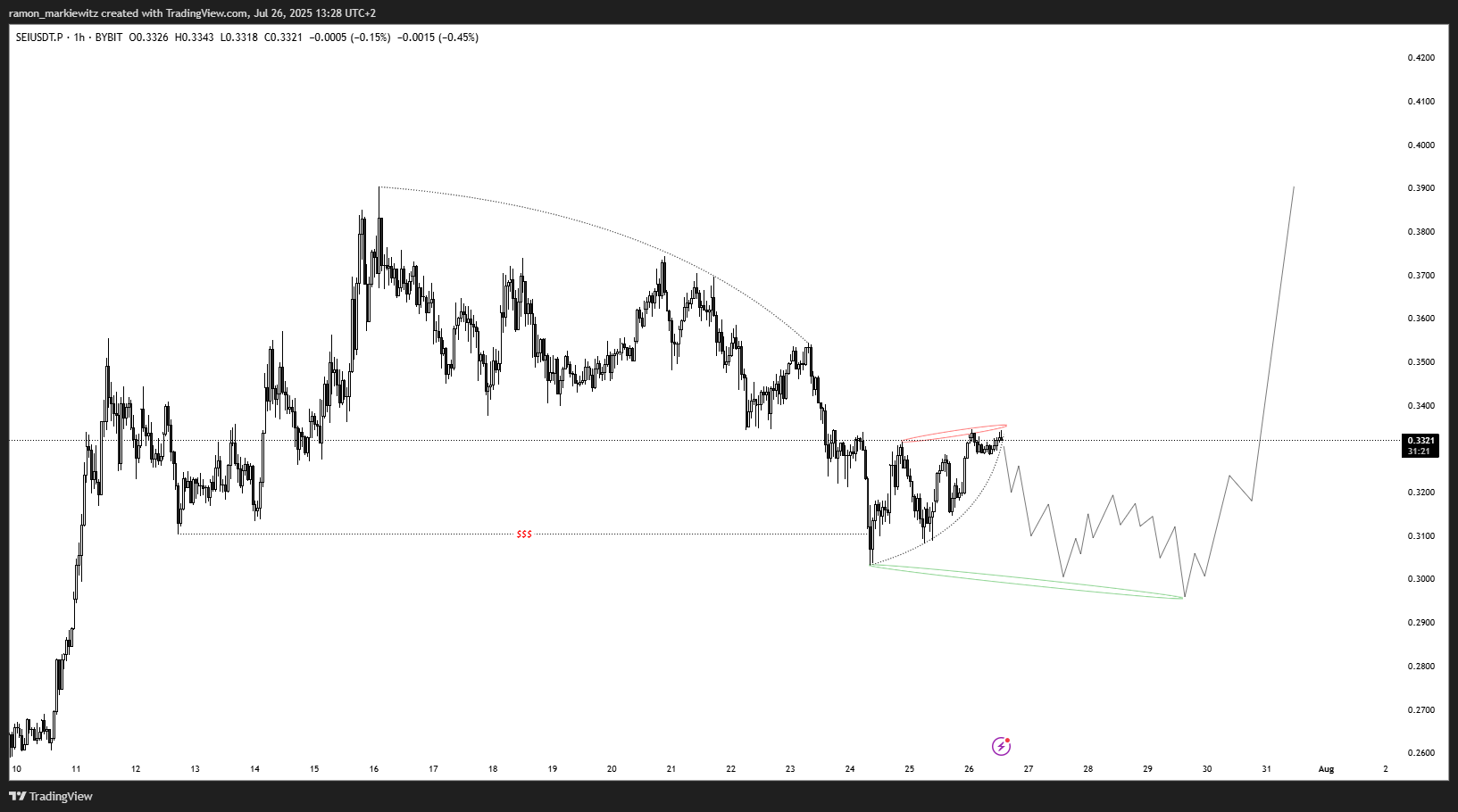SEI3xShort/Tether forum
by Avery Upton, 2025
This week I had some markups that didn’t function as I planned.
I was early, and for a moment, I lacked faith. That’s when something important came into play—community support. Simple comments, feedback, or even a nod from another trader can remind you that your ideas have merit. You’re not clutching at wild fairytales—you’re working a process that others see and respect too.
Example: SEIUSDT Scalp, 1hr
Take a look at my SEIUSDT scalp chart below:
You’ll notice that I called my buy zone too early. Price swept deeper, tagged liquidity, and only then turned in the intended direction. At first glance, that felt like a “wrong” call—but in reality, the structure was valid. The market simply needed to gather more fuel before launching.
This is where the “early bird syndrome” hits hardest: you see the play, but you’re impatient for the entry. With experience (and a little community encouragement), you learn that the idea isn’t invalid—it just needs adjusting.
Look Beyond Your Initial Markup: Learning to Flow With the Market
One of the most difficult things in trading isn’t finding setups—it’s holding the right perspective when price doesn’t do exactly what you want it to.
Too often, traders call a zone, mark up their charts, and lock their conviction into that single narrative. When price doesn’t immediately respect their levels, frustration sets in. But the truth is simple: sometimes you’re early. And being early is not the same as being wrong.
Markets Move to Find Fuel
The market is like nature—it never resists. Rivers bend around obstacles, winds shift with pressure, and markets move to where they can find the liquidity needed to fuel the next impulsive leg. That “liquidity” is often above highs or below lows that retail traders cling to. Understanding this dynamic changes the way you read structure.
When price sweeps your zone before reversing, it’s not invalidation—it’s collection. It’s the market gathering orders, stops, and energy to push in the real direction. If your fundamentals remain strong and your marked areas show consistent support or resistance, don’t abandon the idea too early. Adjust. Reframe. Move with the tide.
The Power of Adjustment
Many traders think “flexibility” means abandoning bias. In reality, it’s the opposite: it’s about strengthening your bias by allowing the market to show you how it wants to move. If you adjust your zones, track the sweep, and re-anchor your bias, you’ll often find that the move becomes clearer and even more profitable.
The trader who adapts gets paid. The trader who resists gets chopped.
The Role of Community
Trading is often painted as a solitary pursuit, but the truth is, community can be a lifeline. Having other eyes on the same market builds perspective. A quick reminder from someone else that your bias was valid—even if a bit early—can keep you from abandoning good ideas too soon.
Community messaging isn’t about signals; it’s about support. It’s the collective reminder that we’re not battling the market alone. When one trader shares an insight or encouragement, it can flip another trader’s mindset from doubt to clarity.
A Mindset That Wins
Trading is less about perfection and more about persistence. You don’t need to catch the exact wick. You don’t need every call to be early and precise. What matters is staying focused, keeping your zones fresh, and allowing the market to breathe before you take your shot.
Keep learning. Keep adjusting. Keep flowing. Lean on your community when you need perspective. That’s how you turn early calls into winning trades.
All the best,
Avery Upton




